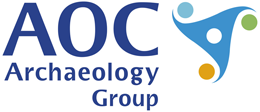Data from Archaeological Recording at Utility Area TX05, Hunningham Road, Offchurch, Warwickshire, 2018-2023 (HS2 Phase One)
High Speed Two Ltd., AOC Archaeology Group, Connect Archaeology, 2025. https://doi.org/10.5284/1127212. How to cite using this DOI
Data copyright © High Speed Two Ltd. unless otherwise stated
This work is licensed under a The Open Government Licence (OGL).
Primary contact
High Speed Two Ltd.
2 Snowhill
Queensway
Birmingham
B4 6GA
United Kingdom
Tel: 08081 434 434
Resource identifiers
- ADS Collection: 5623
- DOI:https://doi.org/10.5284/1127212
- How to cite using this DOI
Introduction
This collection comprises of reports, images, GIS data, site records and an archive decision record from an archaeological recording carried out by AOC Archaeology Group between May and June 2018 during a monitored topsoil strip at Hunningham Road, near Offchurch, Warwickshire, during ground breaking works associated with the diversion of a high pressure gas main (Utility Area TX05).
Project Summary
The site is located 200m to the north east of Offchurch, and approximately 5km east of Leamington Spa (centred on NGR SP 436580 266349).
Archaeological recording aimed to identify the location, extent, survival and significance of potential heritage assets within the site. The archaeological recording also aimed to contribute to the following specific HERDS Knowledge Creation objectives:
- Does a lack of visibility of Neolithic and Bronze Age monuments reflect genuine area distinctiveness, or is this due to variation in geology or investigative techniques?
- Investigate the degree of continuity that existed between Late Bronze Age and Iron Age communities in terms of population, mobility and subsistence strategies;
- The Romano-British period saw the beginning of a more established infrastructure network. Can we investigate the development of these routes, trackways and roads and the influence they had on landscape change?
- Assess the evidence for regional and cultural distinctiveness along the length of the route in the Romano-British period, with particular regard to the different settlement types encountered along the route;
- Identify evidence for late Roman occupation and attempt to identify any continuity in settlement patterns between the end of the Romano-British period and the Early Medieval period;
- Investigate the impacts on rural communities of social economic shocks in the mid-14th century and thereafter and their contribution to settlement desertion;
- Identify patterns of change within medieval rural settlement from the 11th to mid-14th century;
- Test and develop geophysical survey methodologies.
Re-Use Value Statement
The evaluation met its primary objective, which was to determine the nature of any surviving archaeological features or deposits within the site. Two archaeological features were recorded during the archaeological works, neither of which had dating evidence. No dateable finds were retrieved from the stripped topsoil. There are no results of consequence which contribute to the wider historical context of the area. The stripping of the topsoil revealed evidence of modern cultivation truncating the very top surface of the underlying natural deposits. This cultivation evidence was not thought to be remains of ridge and furrow that was suggested within the geophysical survey.
No artefactual material was recovered during the stripping of the topsoil. The stripping of the topsoil revealed evidence of modern cultivation truncating the very top surface of the underlying natural deposits. This cultivation evidence was not thought to be remains of ridge and furrow that was suggested within the geophysical survey.
Due to the lack of significant and dateable archaeological features present at this site there will be no recommendation for formal publication of the results.







